SilverStone ST1200-PTS PSU Review: Compact But Powerful
Why you can trust Tom's Hardware
Transient Response Tests and Ripple Measurements
Advanced Transient Response Tests
For details about our transient response testing, please click here.
In the real world, power supplies are always working with loads that change. It's of immense importance, then, for the PSU to keep its rails within the ATX specification's defined ranges. The smaller the deviations, the more stable your PC will be with less stress applied to its components.
We should note that the ATX spec requires capacitive loading during the transient rests, but in our methodology we also choose to apply a worst case scenario with no extra capacitance on the rails.
Advanced Transient Response at 20% – 200ms
| Voltage | Before | After | Change | Pass/Fail |
|---|---|---|---|---|
| 12V | 11.977V | 11.797V | 1.50% | Pass |
| 5V | 5.014V | 4.825V | 3.77% | Pass |
| 3.3V | 3.316V | 3.137V | 5.40% | Fail |
| 5VSB | 5.058V | 5.009V | 0.97% | Pass |
Advanced Transient Response at 20% – 20ms
| Voltage | Before | After | Change | Pass/Fail |
|---|---|---|---|---|
| 12V | 11.973V | 11.735V | 1.99% | Pass |
| 5V | 5.011V | 4.791V | 4.39% | Pass |
| 3.3V | 3.314V | 3.123V | 5.76% | Fail |
| 5VSB | 5.058V | 5.013V | 0.89% | Pass |
Advanced Transient Response at 20 Percent – 1ms
| Voltage | Before | After | Change | Pass/Fail |
|---|---|---|---|---|
| 12V | 11.972V | 11.746V | 1.89% | Pass |
| 5V | 5.010V | 4.809V | 4.01% | Pass |
| 3.3V | 3.313V | 3.088V | 6.79% | Fail |
| 5VSB | 5.057V | 5.018V | 0.77% | Pass |
Advanced Transient Response at 50% – 200ms
| Voltage | Before | After | Change | Pass/Fail |
|---|---|---|---|---|
| 12V | 11.929V | 11.781V | 1.24% | Pass |
| 5V | 4.983V | 4.800V | 3.67% | Pass |
| 3.3V | 3.282V | 3.112V | 5.18% | Fail |
| 5VSB | 5.016V | 4.967V | 0.98% | Pass |
Advanced Transient Response at 50% – 20ms
| Voltage | Before | After | Change | Pass/Fail |
|---|---|---|---|---|
| 12V | 11.927V | 11.752V | 1.47% | Pass |
| 5V | 4.982V | 4.779V | 4.07% | Pass |
| 3.3V | 3.281V | 3.086V | 5.94% | Fail |
| 5VSB | 5.016V | 4.978V | 0.76% | Pass |
Advanced Transient Response at 50% – 1ms
| Voltage | Before | After | Change | Pass/Fail |
|---|---|---|---|---|
| 12V | 11.925V | 11.761V | 1.38% | Pass |
| 5V | 4.981V | 4.778V | 4.08% | Pass |
| 3.3V | 3.281V | 3.121V | 4.88% | Fail |
| 5VSB | 5.016V | 4.977V | 0.78% | Pass |



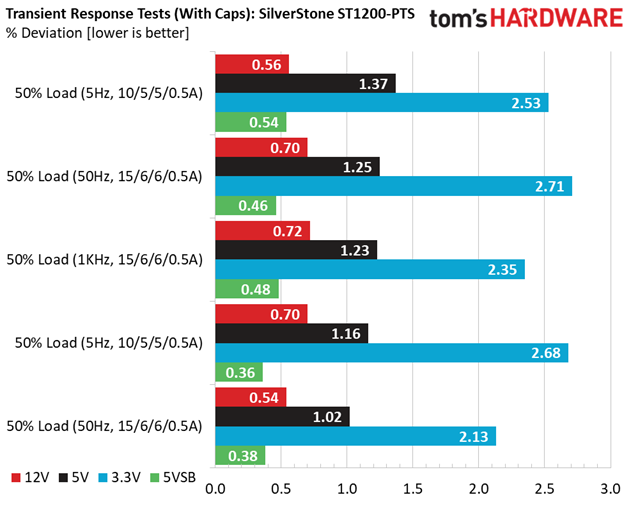

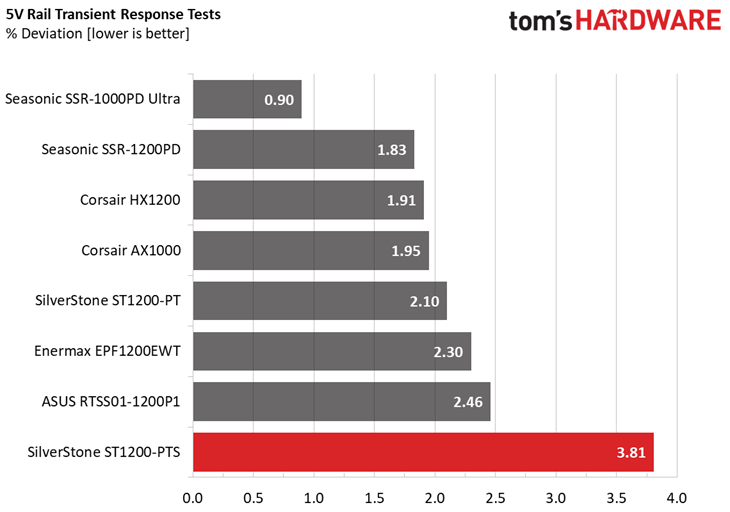
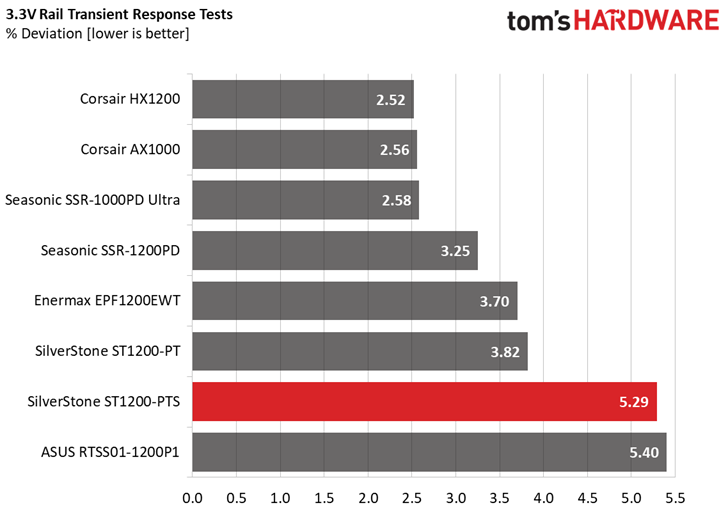
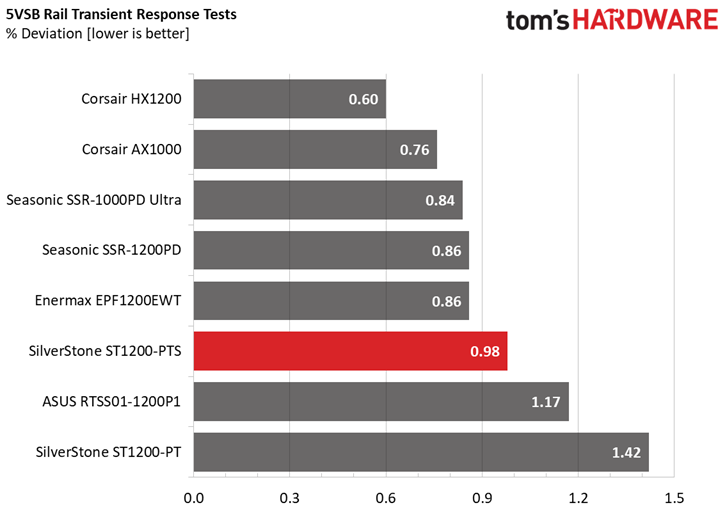
The transient response is mediocre on the +12V and 5V rails, and quite bad at 3.3V. Apparently the lack of enough electrolytic capacitors in the secondary side, led to those results.
Turn-On Transient Tests
In the next set of tests, we measure the PSU's response in simpler transient load scenarios—during its power-on phase. Ideally, we don't want to see any voltage overshoots or spikes since those put a lot of stress on the DC-DC converters of installed components.
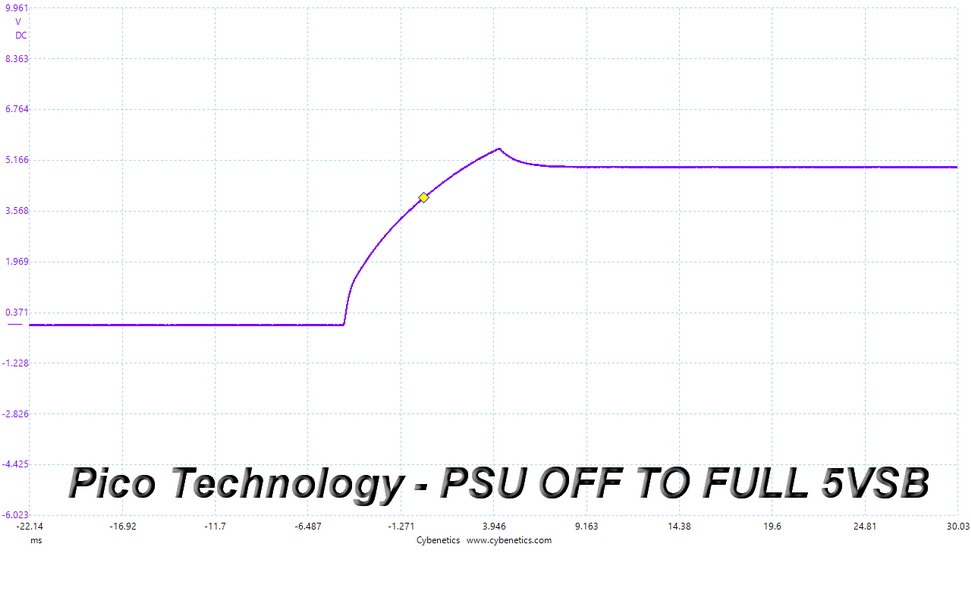
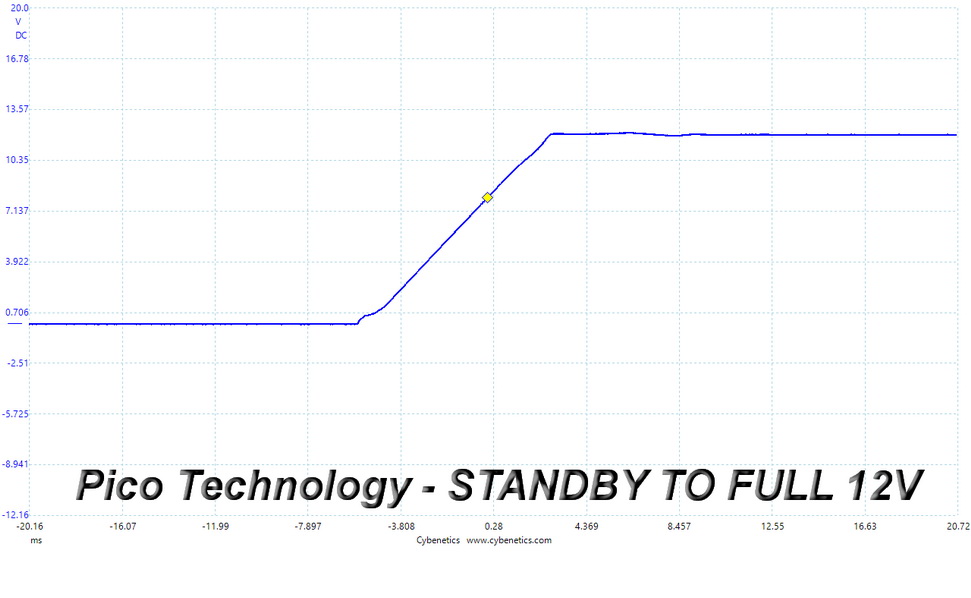
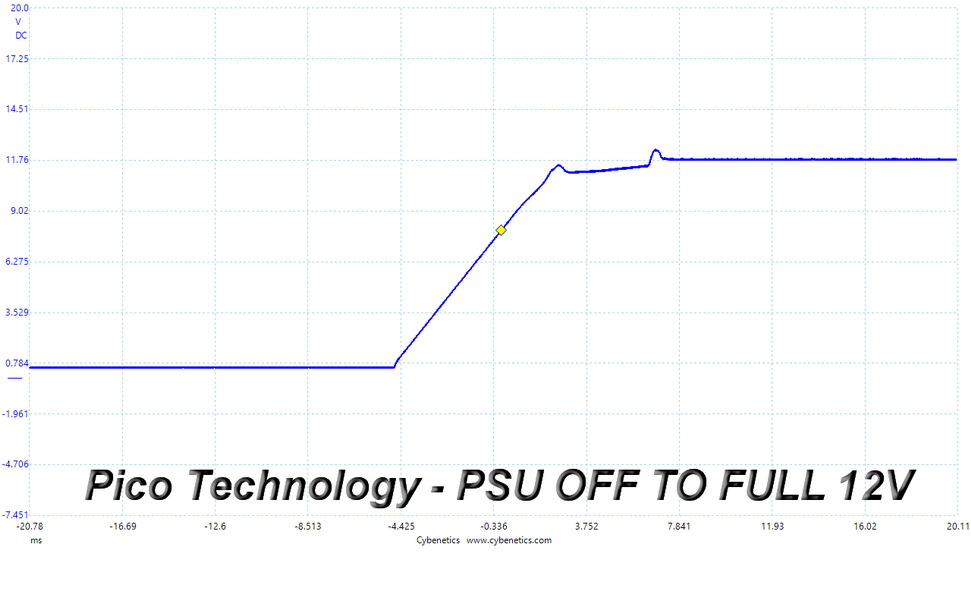
There is a high voltage overshoot on the 5VSB rail, which goes above 5.5V so it is out of the range that the ATX spec sets as safe. Simply put, notably higher, than the nominal, voltage levels cause increased stress to the system's components. In the second test, the slope is smooth while in the last one, there is a small overshoot along with a low ringing (the second wave in the line representing the +12V rail's signal).
Ripple Measurements
Ripple represents the AC fluctuations (periodic) and noise (random) found in the PSU's DC rails. This phenomenon significantly decreases the capacitors' lifespan because it causes them to run hotter. A 10°C increase can cut into a cap's useful life by 50 percent. Ripple also plays an important role in overall system stability, especially when overclocking is involved.
Get Tom's Hardware's best news and in-depth reviews, straight to your inbox.
The ripple limits, according to the ATX specification, are 120mV (+12V) and 50mV (5V, 3.3V, and 5VSB).
| Test | 12V | 5V | 3.3V | 5VSB | Pass/Fail |
|---|---|---|---|---|---|
| 10% Load | 5.8 mV | 8.4 mV | 21.6 mV | 9.6 mV | Pass |
| 20% Load | 11.3 mV | 9.2 mV | 23.6 mV | 11.0 mV | Pass |
| 30% Load | 15.7 mV | 10.2 mV | 28.3 mV | 12.0 mV | Pass |
| 40% Load | 20.7 mV | 11.8 mV | 27.2 mV | 12.7 mV | Pass |
| 50% Load | 27.7 mV | 12.0 mV | 29.1 mV | 13.9 mV | Pass |
| 60% Load | 32.2 mV | 14.9 mV | 33.7 mV | 14.5 mV | Pass |
| 70% Load | 36.4 mV | 16.3 mV | 35.4 mV | 16.0 mV | Pass |
| 80% Load | 42.2 mV | 18.7 mV | 42.8 mV | 17.1 mV | Pass |
| 90% Load | 50.4 mV | 17.9 mV | 55.2 mV | 19.2 mV | Fail |
| 100% Load | 56.4 mV | 18.8 mV | 35.0 mV | 22.8 mV | Pass |
| 110% Load | 63.3 mV | 21.7 mV | 56.8 mV | 24.6 mV | Fail |
| Crossload 1 | 9.3 mV | 13.4 mV | 24.0 mV | 30.0 mV | Pass |
| Crossload 2 | 56.1 mV | 15.0 mV | 29.1 mV | 21.3 mV | Pass |
The ripple suppression could be better at +12V. Ideally we would like to see less than 40mV ripple in the worst case scenario on this rail. At 5V and 5VSB the ripple readings are low enough, while at 3.3V, there seems to be a problem in some tests.
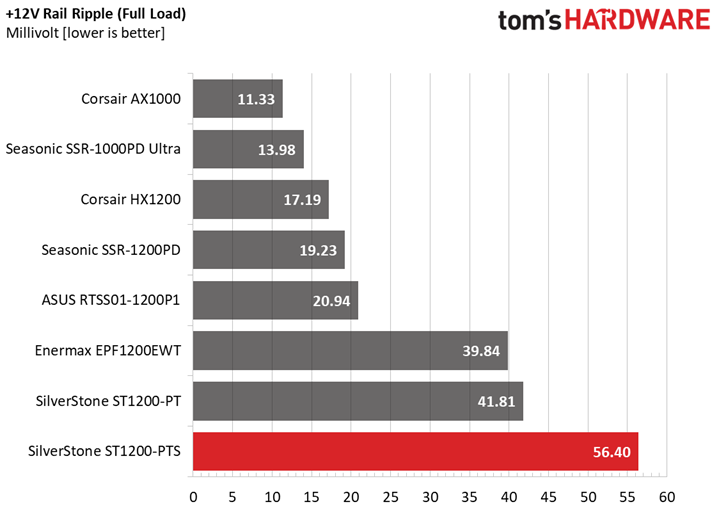
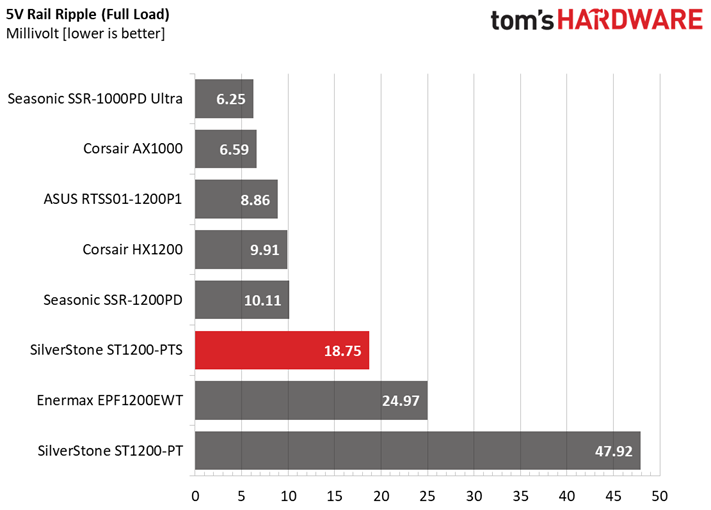


Ripple At 90% Load

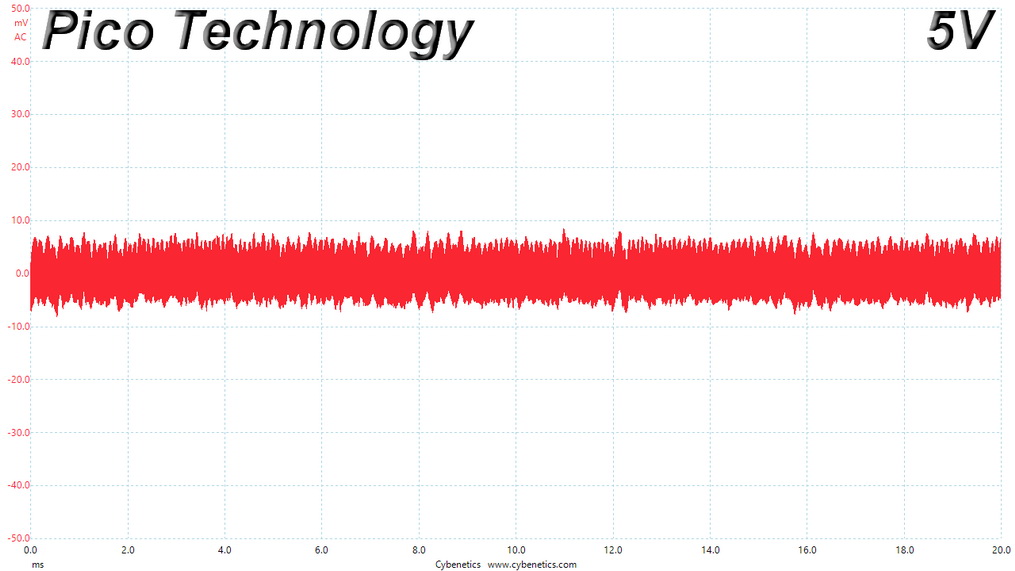

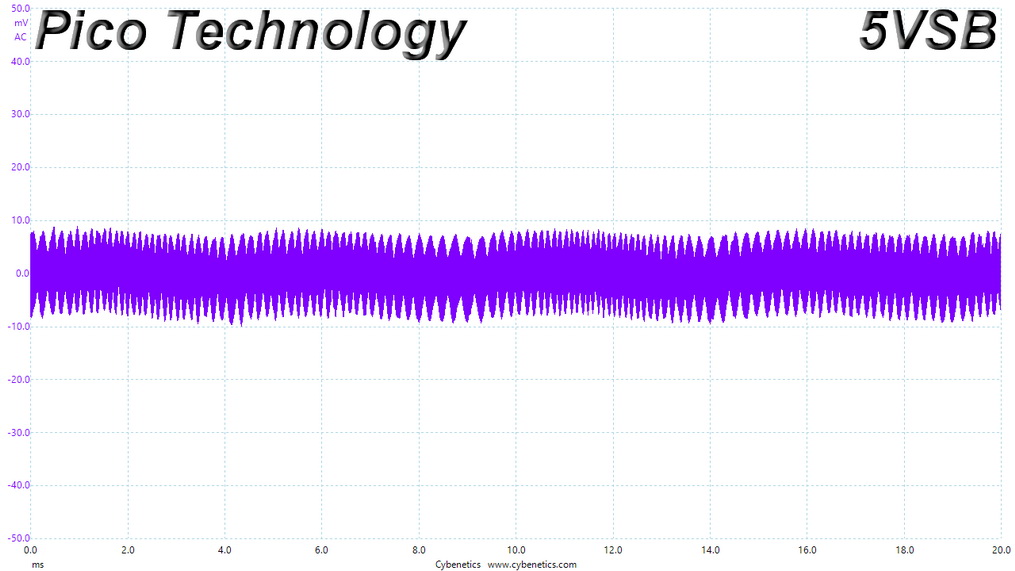
Ripple At Full Load
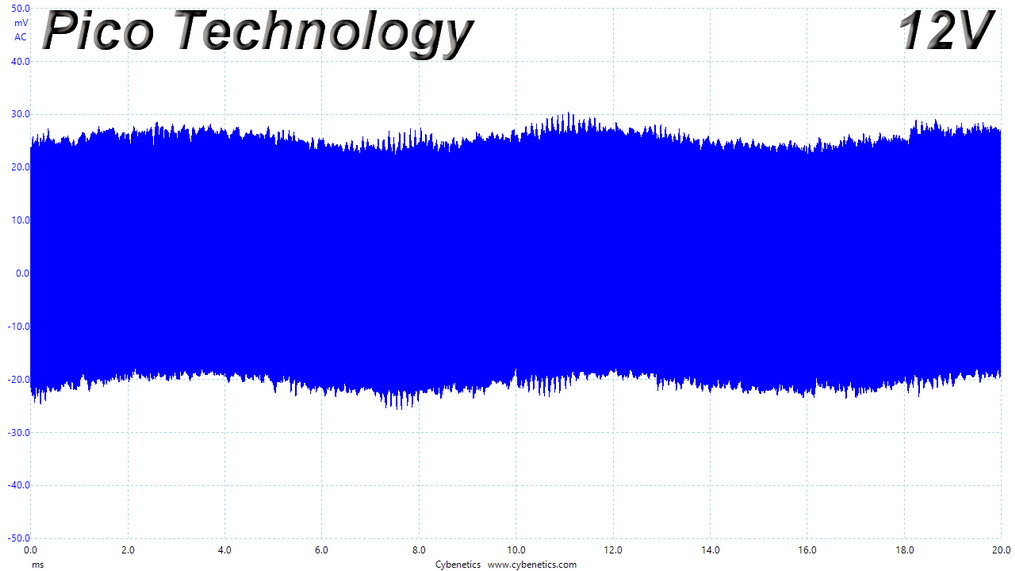

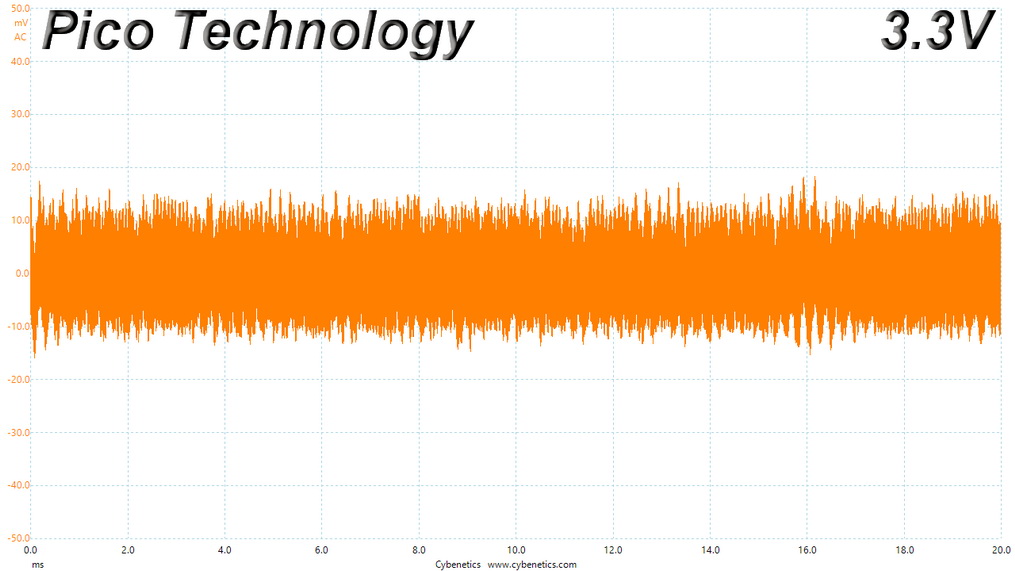
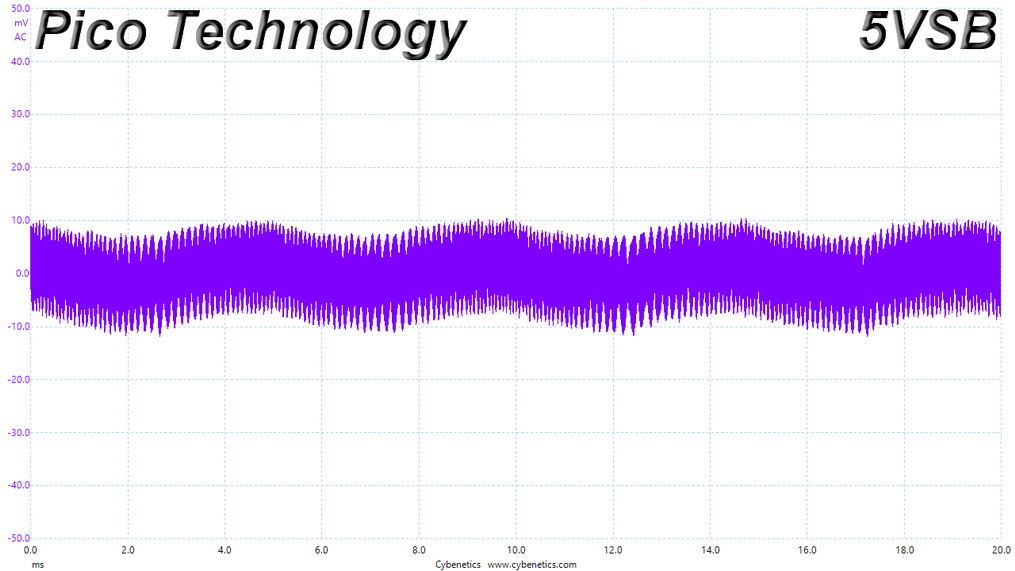
Ripple At 110% Load

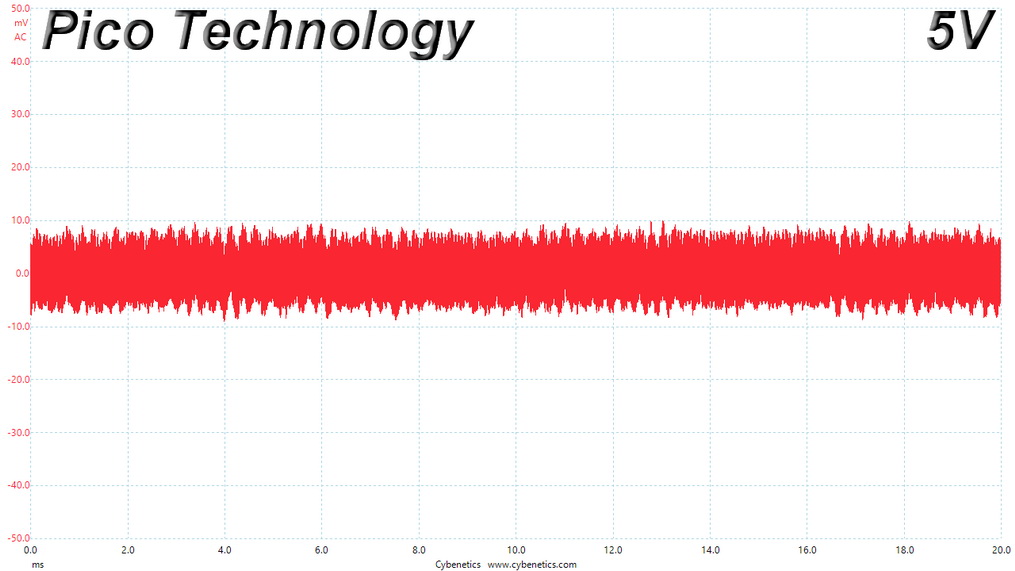
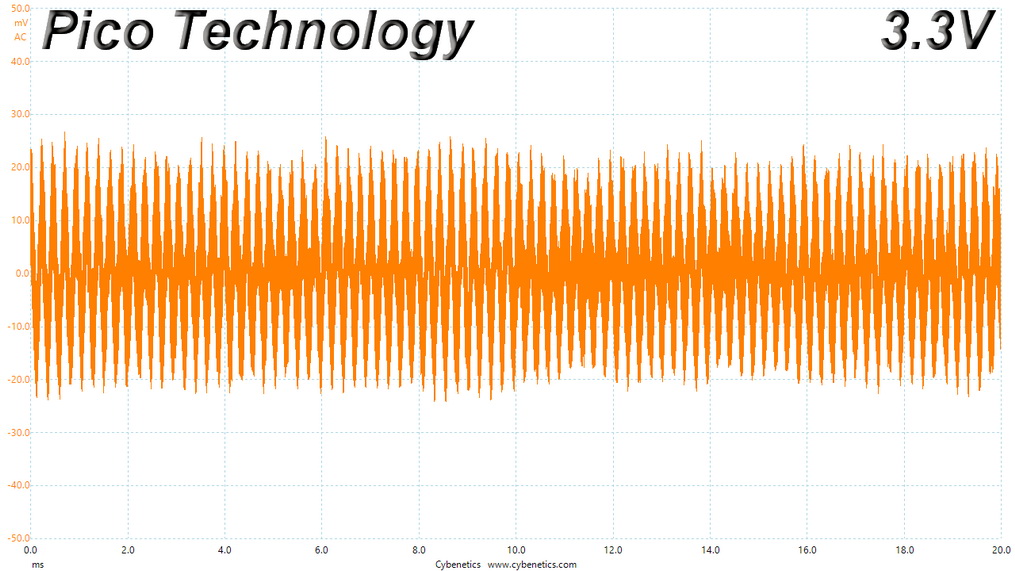
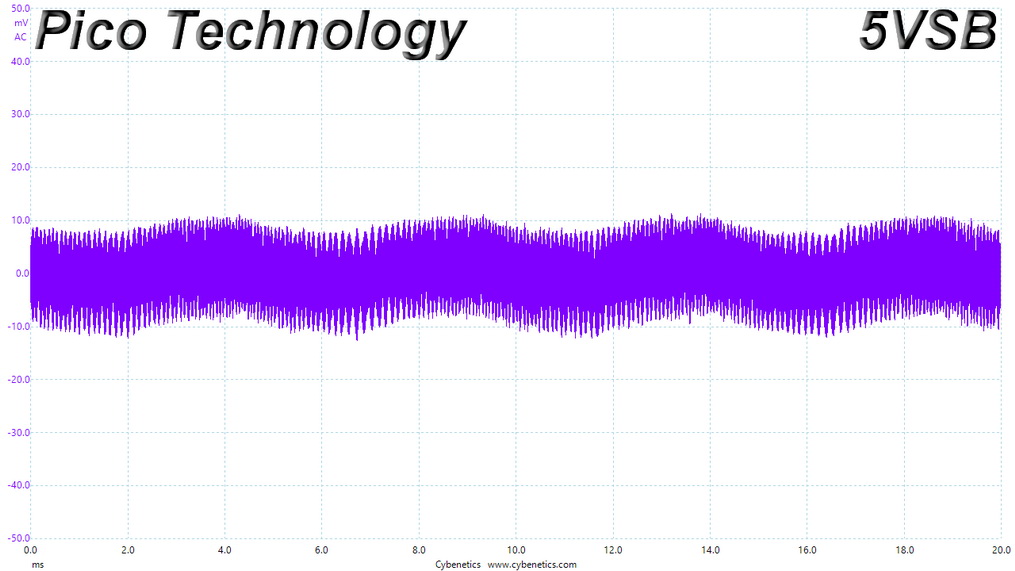
Ripple At Cross-Load 1

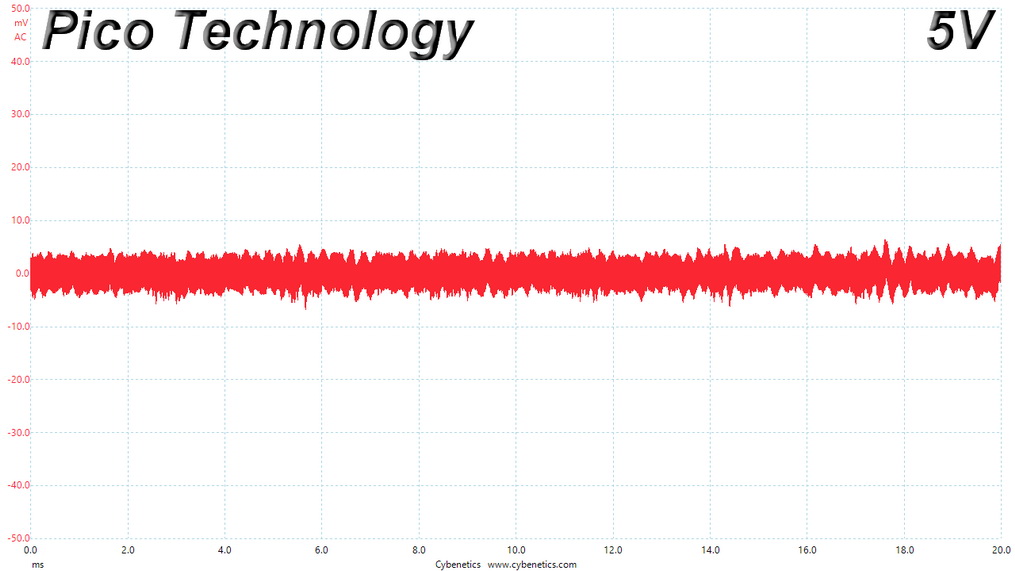

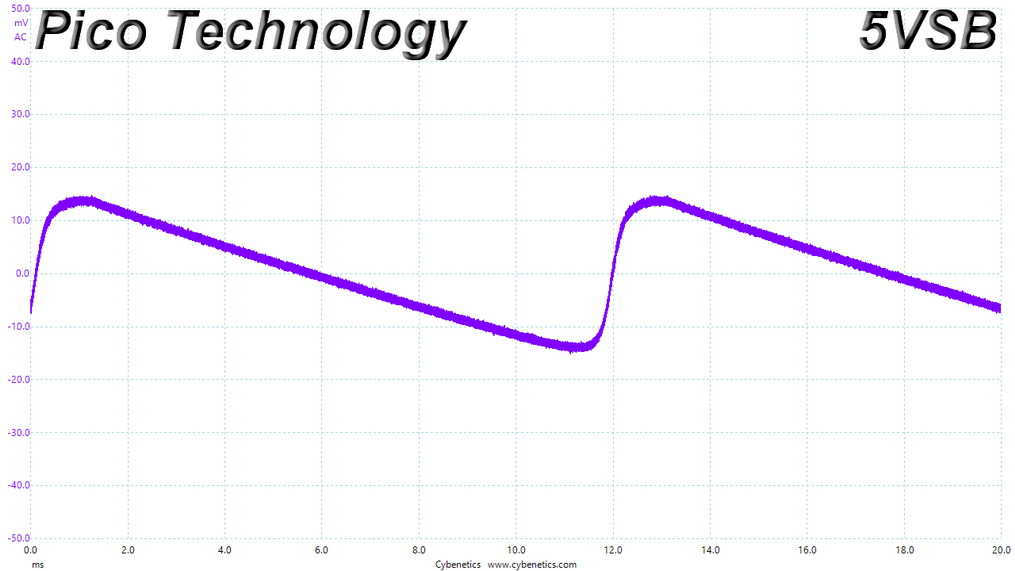
Ripple At Cross-Load 2
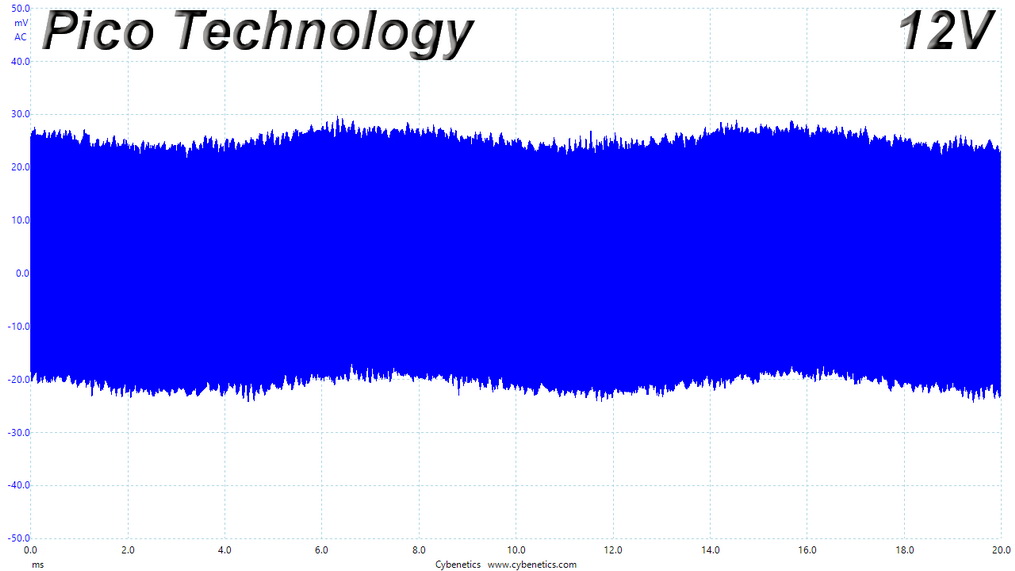
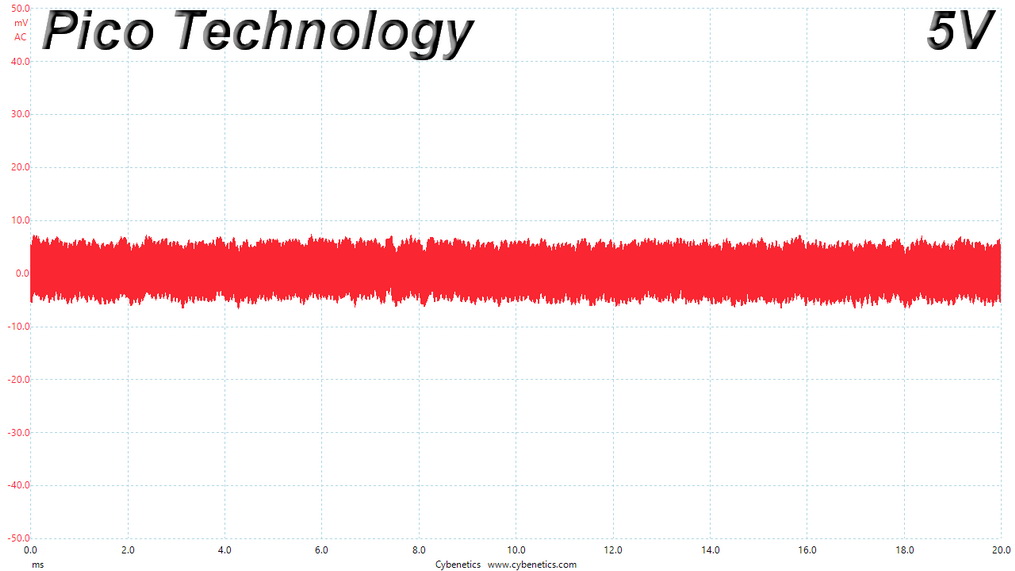


MORE: Best Power Supplies
MORE: How We Test Power Supplies
MORE: All Power Supply Content
Current page: Transient Response Tests and Ripple Measurements
Prev Page Protection Features, DC Power Sequencing, Cross-Load Tests and Infrared Images Next Page Performance, Noise and Efficiency
Aris Mpitziopoulos is a contributing editor at Tom's Hardware, covering PSUs.